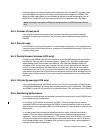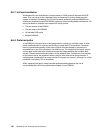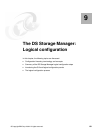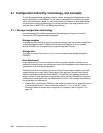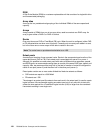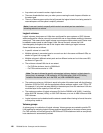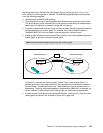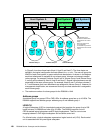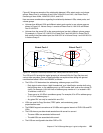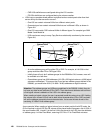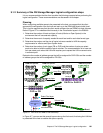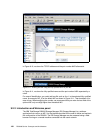
Chapter 9. The DS Storage Manager: Logical configuration 157
Volume groups can be thought of as LUN groups. Do not confuse the term volume group
here with that of volume groups on pSeries. The DS6000 Storage Manager volume groups
have the following properties:
Volume groups enable FB LUN masking.
They contain one or more host attachments from different hosts and one or more LUNs.
This allows sharing of the volumes/LUNs in the group with other host port attachments or
other hosts that might be, for example, configured in clustering.
A specific host attachment can be in only one volume group. Several host attachments can
be associated with one volume group. For example, a port with a WWPN number of
10000000C92EF123, can only reside in one volume group, not two or more.
Assigning host attachments from multiple hosts systems, even running different operating
system types, is allowed in the same volume group.
Figure 9-3 Diagram of the relationship of a host attachment to a volume group
In Figure 9-3, we show two volume groups, Volume Group 1 and Volume Group 2. A
pSeries server with 1 host attachment (four ports grouped in that attachment) resides in
Volume Group1. The xSeries2 server has 1 host attachment (2 ports grouped into the
attachment). The ports are grouped together in one attachment definition, for example, the
server, xSeries2, is dual pathed to the LUNs through one attachment group definition.
In order to share LUNs across multiple host attachments, LUNs can be in more than one
volume group as shown in the example in Figure 9-4 on page 158.
Note: We recommend configuring one host per volume group.
xSeries2
pSeries1
Volume Group 2
Volume Group 1
Host
Host Attachment



